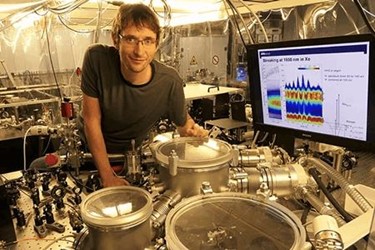Fastest Attosecond Laser Spectroscopy Sees Electrons In Slow Motion
By Jof Enriquez,
Follow me on Twitter @jofenriq

Researchers at ETH Zurich have generated the world's shortest X-ray laser pulse with a duration of only 43 attoseconds – fast enough to observe electrons in slow motion during chemical reactions.
X-ray lasers have been used to image whole living bacterial cells, but most recent efforts like the one achieved at ETH Zurich allow faster x-ray lasers to supply detailed information about molecular rotation in the range of picoseconds (10-12 s), atoms vibration in the range of femtoseconds (10‑15 s), and electron movement in the range of attoseconds (10-18 s).
Laser pulses with attosecond speeds have been produced before, but largely involved titanium:sapphire lasers that decreased the potential photon energy and effectively ruled out studying large chunks of the periodic table, reports Engadget.
To overcome these constraints, ETH Zurich scientists developed quicker pulses by extending attosecond metrology to the soft-X-ray (SXR) domain using mid-infrared (mid-IR) drivers. Out of an infrared laser, they generated a soft X-ray laser pulse with a very large bandwidth.
As a result, various elements, including phosphorus and sulphur – elements present in biomolecules – now can be directly observed with unprecedented time resolution by exciting their inner-shell electrons.
"The faster a charge transfer can take place, the more efficiently a reaction can proceed," said ETH professor Hans Jakob Wörner.
Better understanding of the charge transfer pathway also could pave the way for more efficient solar cells, since it is now possible to follow the step-by-step process of excitation, through sunlight, up to the generation of electricity.
Attosecond laser spectroscopy goes beyond merely observing reaction processes in the human body, though. Since these ultra-fast lasers makes it possible for the first time to observe electron movement, therefore, they also can be used to manipulate chemical reactions.
"Using a laser pulse can alter the course of a reaction – even chemical bonds can be broken by stopping the charge shift at a certain location in the molecule," according to the researchers.
The ETH Zurich team is now trying to generate even shorter X-ray pulses to image the migration of electrons in more complex molecules of a higher number of elements, which is made possible by a wider X-ray spectrum.
Details of this groundbreaking achievement in attosecond laser spectroscopy are presented in the journal Optics Express.
